Browse our Growing Library of Success Stories
By:
Leopold Conservation Award Program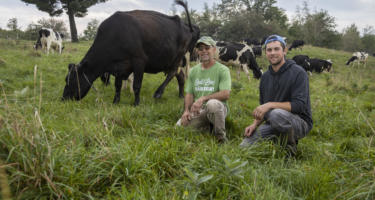 Guy Choiniere believes the health of the soil is the health of the farm. This land ethic drives his actions on a dairy farm that’s been in the Choiniere family since 1945.
Guy Choiniere believes the health of the soil is the health of the farm. This land ethic drives his actions on a dairy farm that’s been in the Choiniere family since 1945.
While navigating changes in the farm economy, climate and farming practices, the Choiniere Family Farm has become a model of innovation and adaptability for other New England dairies.
By:
Leopold Conservation Award Program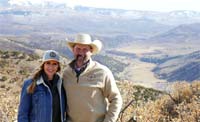 For Colby and McKenzie Pace, raising beef cattle includes keeping a sharp eye on preventing overgrazing and noxious weeds and seeking out ways to improve their land for nesting and migrating shorebirds. This forward-thinking approach to livestock and wildlife management earned the Coalville couple — and their Half Circle Cross Ranch — the 2020 Utah Leopold Conservation Award.
For Colby and McKenzie Pace, raising beef cattle includes keeping a sharp eye on preventing overgrazing and noxious weeds and seeking out ways to improve their land for nesting and migrating shorebirds. This forward-thinking approach to livestock and wildlife management earned the Coalville couple — and their Half Circle Cross Ranch — the 2020 Utah Leopold Conservation Award.
By:
K. Gregg Elliott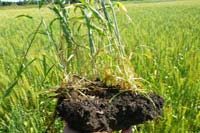 The nonprofit Soil Health Academy (SHA) is just one of many initiatives spawned by regenerative agriculture guru Gabe Brown in collaboration with additional expert partners. SHA holds regenerative agriculture workshops around the country that are open to anyone who’s interested, and they are routinely sold out.
The nonprofit Soil Health Academy (SHA) is just one of many initiatives spawned by regenerative agriculture guru Gabe Brown in collaboration with additional expert partners. SHA holds regenerative agriculture workshops around the country that are open to anyone who’s interested, and they are routinely sold out.
By:
Gregg Elliott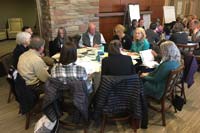 When Heather Dutton, fresh out of undergraduate school at the Warner College of Natural Resources and graduate school in the College of Agriculture at Colorado State University, began her first job working for a non-profit river restoration organization in the San Luis Valley, she was thrilled. She also felt confident that her technical training in restoration ecology had prepared her for the challenges she’d soon be facing.
When Heather Dutton, fresh out of undergraduate school at the Warner College of Natural Resources and graduate school in the College of Agriculture at Colorado State University, began her first job working for a non-profit river restoration organization in the San Luis Valley, she was thrilled. She also felt confident that her technical training in restoration ecology had prepared her for the challenges she’d soon be facing.
Heather was in for a surprise.
By:
Natural Resources Conservation Service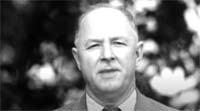 This video is the story of a young scientist, Hugh Hammond Bennett, who recognized 80 years ago that the United States was at risk of losing it’s most important resource – its soil. He made it his mission to change the trajectory of agriculture at a time of great crisis and to provide farmers and ranchers with the information and tools they needed to be sustainable.
This video is the story of a young scientist, Hugh Hammond Bennett, who recognized 80 years ago that the United States was at risk of losing it’s most important resource – its soil. He made it his mission to change the trajectory of agriculture at a time of great crisis and to provide farmers and ranchers with the information and tools they needed to be sustainable.
This 21 minute video is the story of the conservation movement that Hugh Hammond Bennett began and includes interesting insights into the policies and structures that he set up that we continue to rely on today. His work revealed so much of what we’re rediscovering and renaming as “regenerative agriculture.”
By:
Ted Williams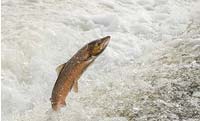 Unlike most New England rivers, the East Machias River never quite lost its salmon. Every fall, a small remnant population swam upstream, against waters that tumble and curl 36 miles from Crawford Lake to the coast, through balsam-scented boreal forest where moose splash and eastern coyotes sing. The Downeast Salmon Federation’s weathered, cedar-shingled Peter Gray Hatchery sits along the bank, just below a narrow stretch of rapids that empties into the river’s wide, flat tidal reaches.
Unlike most New England rivers, the East Machias River never quite lost its salmon. Every fall, a small remnant population swam upstream, against waters that tumble and curl 36 miles from Crawford Lake to the coast, through balsam-scented boreal forest where moose splash and eastern coyotes sing. The Downeast Salmon Federation’s weathered, cedar-shingled Peter Gray Hatchery sits along the bank, just below a narrow stretch of rapids that empties into the river’s wide, flat tidal reaches.
By:
Washington Policy Center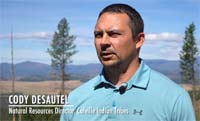 This video from Washington Policy Center with cooperation from the Confederated Tribes of the Colville Reservation, sheds light on how the tribes manage forests to be more healthy using commercial harvests, thinnings, and controlled burns to deal with the pressures of insect infestation, climate change, and decades of fire suppression.
This video from Washington Policy Center with cooperation from the Confederated Tribes of the Colville Reservation, sheds light on how the tribes manage forests to be more healthy using commercial harvests, thinnings, and controlled burns to deal with the pressures of insect infestation, climate change, and decades of fire suppression.
By:
Steve Stuebner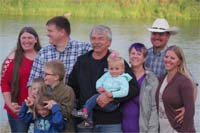 Before knowing much about land trusts, Ashton farmer John Nedrow thought they were some kind of sinister force seeking to take over his farm and force landowners off their property.
Before knowing much about land trusts, Ashton farmer John Nedrow thought they were some kind of sinister force seeking to take over his farm and force landowners off their property.
“Back then, I thought they were the enemy,” Nedrow said in an interview on his alfalfa and malt-barley farm, which straddles the banks of the famed Henrys Fork River, a blue-ribbon trout stream. “I thought they wanted to turn this whole area into national park.”
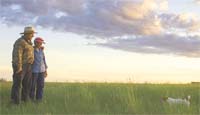 Their introduction to holistic ranch management techniques called into question long-held, traditional ways of thinking. The drastic changes that followed required a leap of faith for the fourth-generation ranchers. They traded harvesting hay for grazing methods that let their cattle harvest the forage themselves. Such changes didn’t happen overnight, and each came with its own risk and learning curve.
Their introduction to holistic ranch management techniques called into question long-held, traditional ways of thinking. The drastic changes that followed required a leap of faith for the fourth-generation ranchers. They traded harvesting hay for grazing methods that let their cattle harvest the forage themselves. Such changes didn’t happen overnight, and each came with its own risk and learning curve.
By:
University of MaineTour U.S. Forest Service research at the Penobscot Experimental Forest and see how different kinds of silviculture and harvesting have changed the forest over more than half a century. Learn from experts at the University of Maine, Maine Forest Service, Maine Audubon, and others around the state about how to manage your woodlot for the future, considering timber production, climate change, pests and disease.
By:
K. Gregg Elliott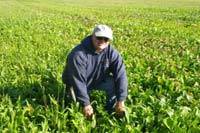 Like almost everyone else in his rural community, Gabe had been farming and ranching using conventional methods since purchasing his Brown’s Ranch from the parents of his wife Shelly in 1991. Possibly because he had not grown up on a farm, Gabe found that he was constantly asking the question, “why do we do things this way?”
Like almost everyone else in his rural community, Gabe had been farming and ranching using conventional methods since purchasing his Brown’s Ranch from the parents of his wife Shelly in 1991. Possibly because he had not grown up on a farm, Gabe found that he was constantly asking the question, “why do we do things this way?”
By:
Northwest Florida Water Management District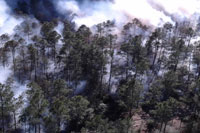 On March 2, 2018, a large prescribed burn occurred at the Yellow River Water Management Area in Santa Rosa County, Florida, which is managed by the Northwest Florida Water Management District. Weather and atmospheric conditions were ideal and resources were available for the Florida Forest Service to approve the burn permit. Aerial ignition via helicopter started the fire systematically across the landscape. Ground firing and monitoring crews, consisting of 15 personnel were stationed at the tract perimeter as ground support during the burn.
On March 2, 2018, a large prescribed burn occurred at the Yellow River Water Management Area in Santa Rosa County, Florida, which is managed by the Northwest Florida Water Management District. Weather and atmospheric conditions were ideal and resources were available for the Florida Forest Service to approve the burn permit. Aerial ignition via helicopter started the fire systematically across the landscape. Ground firing and monitoring crews, consisting of 15 personnel were stationed at the tract perimeter as ground support during the burn.
By:
USDA Forest Service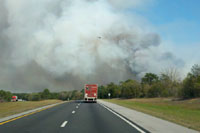 Over four long days in late March 2011, the most severe wildfire outbreak in a decade occurred at Eglin Air Force Base, located near Destin, Florida (Fig. 1). A persistent drought, 20 mph winds and low humidity, combined with 12-15 arson fires on the property, resulted in 6,000 acres burned in a matter of days. Due to Eglin’s aggressive prescribed fire program, the March 2011 wildfire severity and acres burned were significantly reduced. Without this regular fuel reduction, anywhere from 10-12,000 acres could have burned just on the Eglin side, with untold acres burned and property damaged north of Interstate 10.
Over four long days in late March 2011, the most severe wildfire outbreak in a decade occurred at Eglin Air Force Base, located near Destin, Florida (Fig. 1). A persistent drought, 20 mph winds and low humidity, combined with 12-15 arson fires on the property, resulted in 6,000 acres burned in a matter of days. Due to Eglin’s aggressive prescribed fire program, the March 2011 wildfire severity and acres burned were significantly reduced. Without this regular fuel reduction, anywhere from 10-12,000 acres could have burned just on the Eglin side, with untold acres burned and property damaged north of Interstate 10.
By:
Glenn Rosenholm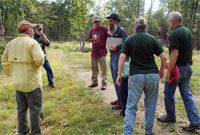 Low-impact forester overcomes challenges to improve landowners’ forest lands. Robert Nelson believes that good forest management almost always improves wildlife habitat. You can manage your land to improve your timber. Forest health is also another big concern, because it increases resilience to disease and climate change stressors.
Low-impact forester overcomes challenges to improve landowners’ forest lands. Robert Nelson believes that good forest management almost always improves wildlife habitat. You can manage your land to improve your timber. Forest health is also another big concern, because it increases resilience to disease and climate change stressors.
By:
Glenn Rosenholm Maine surfboard maker creates beautiful and durable blend of form and function out of sustainably grown wood from local forests. We’re proud to be in Maine supporting Maine businesses.
Maine surfboard maker creates beautiful and durable blend of form and function out of sustainably grown wood from local forests. We’re proud to be in Maine supporting Maine businesses.
By:
Jim Robbins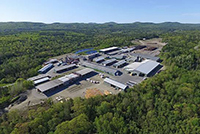 The Robbins decided to place a conservation easement on the whole area to protect it as a working forest to provide logs for the mill but also to protect the abundant wildlife
The Robbins decided to place a conservation easement on the whole area to protect it as a working forest to provide logs for the mill but also to protect the abundant wildlife
By:
Lauri Munroe-Hultma Whale watch guide includes puffins in his repertoire Whale watch guide includes puffins in his repertoire
Whale watch guide includes puffins in his repertoire Whale watch guide includes puffins in his repertoire